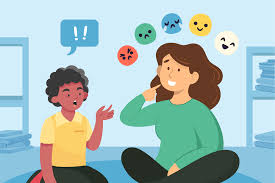The educational landscape continues to evolve rapidly, with innovative teachers increasingly recognizing the pedagogical potential inherent in thoughtfully selected kids animated shows. This integration represents a significant shift from traditional views that once dismissed animated content as mere entertainment, acknowledging instead the powerful learning opportunities these programs offer when strategically incorporated into comprehensive instructional approaches. The most effective educators view quality animated resources not as substitutes for teaching but as valuable complements to their professional expertise.
Discerning teachers approach kids animated shows with clear educational criteria, evaluating potential classroom resources based on content accuracy, developmental appropriateness, representation of diversity, and alignment with specific curriculum objectives. This careful selection process ensures that when animated programming enters learning environments, it serves intentional pedagogical purposes rather than functioning simply as a reward or time-filler. The critical assessment demonstrates the professional judgment that distinguishes casual viewing from educational implementation.
Cognitive science research provides compelling support for this integrated approach to instruction. Studies consistently demonstrate that information presented through multiple sensory channels creates stronger neural connections than single-modality teaching. When children encounter concepts through teacher explanation, hands-on exploration, and carefully selected animated representation, they develop robust mental frameworks that support deeper understanding and application of knowledge across contexts. This multi-pathway approach proves particularly valuable for abstract concepts that young learners might find challenging to visualize based solely on verbal descriptions.
Literacy development represents one of the most significant benefits when quality animated programming enters the classroom ecosystem. Well-crafted shows naturally incorporate rich vocabulary, narrative structures, and character development that mirror elements students encounter in written texts. Skilled educators draw explicit connections between these features in favorite animated stories and similar elements in books, helping children transfer their engagement and comprehension skills across different media formats. This scaffolded approach proves particularly valuable for emerging readers and English language learners.
Mathematical thinking finds natural support in many educational animations that incorporate numerical concepts, spatial relationships, and problem-solving scenarios. Abstract ideas like geometric transformations, proportional reasoning, and algebraic thinking become more accessible when characters encounter and resolve challenges requiring these mathematical applications. Classroom teachers leverage these narrative examples when introducing similar concepts during mathematics instruction, creating cognitive bridges between entertainment and academic reasoning.
Scientific inquiry aligns seamlessly with the curiosity-driven narratives common in quality educational animations. Programs featuring characters who observe phenomena, formulate questions, investigate possibilities, and draw evidence-based conclusions model the scientific process in engaging, accessible ways. Educators skilled in media integration reference these familiar scenarios when introducing similar inquiry practices during science lessons, helping students recognize the real-world applications of scientific thinking beyond laboratory settings.
Social-emotional development finds valuable support in contemporary animated programs that deliberately address interpersonal challenges, emotional regulation, and community values. When classroom teachers reference these familiar scenarios during discussions of school expectations or conflict resolution, they access established emotional connections that make abstract social concepts more concrete for young learners. This approach proves particularly valuable during early childhood and elementary years when social skill development represents a crucial developmental task.
Cultural understanding and global awareness develop through thoughtfully selected animated content featuring diverse characters, settings, and traditions. Forward-thinking educators use these representations as entry points for discussions about cultural appreciation, historical context, and multiple perspectives on shared human experiences. This approach helps young learners develop awareness of and respect for differences while recognizing universal themes that connect people across geographic and cultural boundaries.
Critical media literacy naturally integrates with classroom viewing experiences when teachers guide students to analyze rather than simply consume animated content. By discussing how stories are constructed, examining character motivations, and identifying messages embedded within programming, educators transform passive entertainment into active critical thinking exercises. These analytical skills transfer beyond animated content to support thoughtful engagement with all media forms students encounter throughout their lives.
Differentiated instruction becomes more manageable when quality animated resources supplement teacher-led activities. Students requiring additional reinforcement of concepts can benefit from visual representations and simplified explanations, while advanced learners might analyze the same content for more sophisticated elements or applications. This flexibility allows educators to address diverse learning needs without creating entirely separate lesson materials for different learning profiles within the classroom community.
Assessment opportunities emerge naturally when students demonstrate understanding through creative responses to animated content. Whether creating alternative storylines, designing new characters that embody specific principles, or solving similar problems to those encountered in favorite episodes, these activities reveal comprehension while engaging higher-order thinking skills. Thoughtful teachers design these assessments to measure specific learning objectives while maintaining the engagement factor that makes animated content so appealing to young learners.
The home-school connection strengthens when teachers communicate with families about educational animated content that reinforces classroom learning. When parents understand how specific programs align with curriculum objectives, they can extend learning conversations beyond school hours, reinforcing concepts through casual discussion of favorite episodes or characters. This continuity between learning environments maximizes educational impact while helping families make informed choices about screen time quality and quantity.
Professional development increasingly addresses effective integration of multimedia resources, including animated content. Forward-thinking school districts recognize that preparing teachers to thoughtfully incorporate these resources represents an investment in student engagement and achievement. When educators receive guidance on selection criteria, viewing frameworks, and follow-up activities, they implement these resources with greater intentionality and impact.
As educational technology continues evolving, the partnership between classroom instruction and quality animated programming will likely strengthen further. Interactive elements, augmented reality extensions, and customizable learning pathways represent the next frontier in this educational approach. Teachers who stay informed about these developments position their students to benefit from the full spectrum of learning opportunities available in our increasingly visual and digital world.

